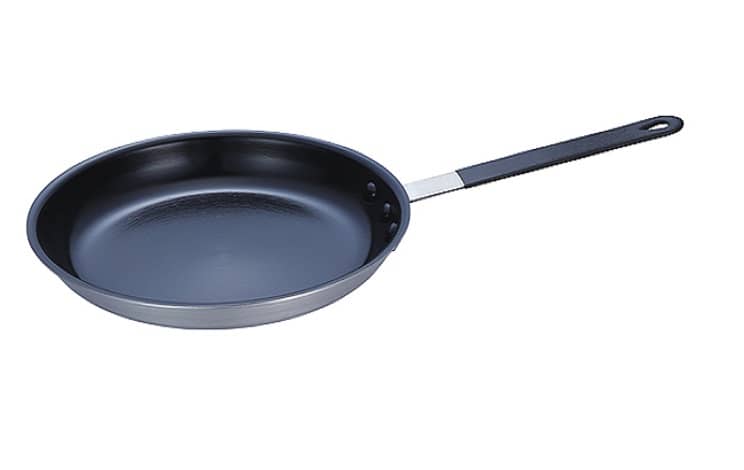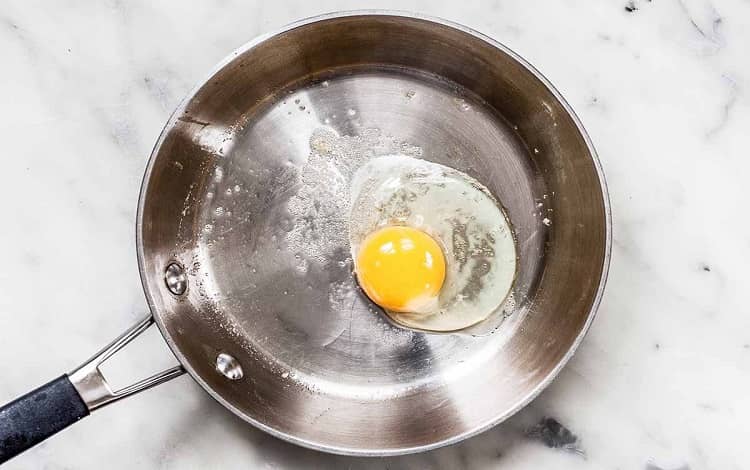Bacon, potatoes, and fried eggs is a dish that is the go-to options for many in breakfast. But to make them taste good and look good, you would need to get the right cookware. And by the right cookware, we are referring to a frying pan here. However, getting a proper frying pan will not be enough.
You would also need to know how do you use an egg frying pan. Without that, no matter how good of a pan you have, you will not be able to make good fried eggs for breakfast. However, if you do not know how to use the frying pan for frying eggs properly, we got you covered in that regard.
We have about six years of experience in making eggs of different types in breakfast using the frying pan. And we would be more than happy to share our techniques and steps with you.

The Right Pan
Before we get into frying the eggs, we first need to ensure if you really know the right pan for frying eggs. Well, if you asked us, we would recommend getting the non-stick versions for this. The non-stick coating will make the process of removing the eggs easy. Also, it will make the flipping task easier.
In addition to that, for the non-stick pans, there will be no need to use too much fat or oil. The non-stick coating will do a proper job in keeping the surface non-sticky. On that note, the cast-iron pan is our second choice. Like any other cast-iron cookware, this one will heat up exceptionally fast.
Apart from heating up fast, it should be capable of retaining the heat properly as well. These two capabilities will enable the pan to offer extra-crispy edges, which most of us love. However, do make sure that you are not using a stainless steel pan. Those are too porous, which results in uneven heating.
Additionally, if you do not preheat them, the egg will stick right on the surface. Also, the stainless steel pan will typically offer you overcooked eggs because of not being able to sear the proteins properly. Instead of searing, it cooks the proteins too fast, which is never a good thing.
Which One Is the Right Oil for Frying Eggs?

Aside from the right cooking pan, you need to consider the oil as well. Generally, eggs are fried in an exceptionally short amount of time. It takes about five minutes to fry them up. Sometimes, it can even take less than that. To be on the heat for a short amount of time, you can basically use a broad range of fats.
However, if you do not want your eggs to burn, opt for the medium smoke point oils. Those should have a heating point of 350 degrees Fahrenheit and above. However, we would always recommend butter. It holds the ability to provide a rich mouthfeel. Butter also induces a nutty flavor, which most people love.
Additionally, there will be a brown hue on the whites with butter, which will make the egg look wonderful. However, make sure that you do not heat the butter on high heat for a long time. That will make the butter burn because eventually, it is a milk solid. And milk solids can burn when heated up for an extended amount of time.
However, you can reduce the chances of the butter burning. All you need to do is wipe the pan between each of the batches. And use fresh butter for each of the batches of eggs. To get the edges extra crispy, use coconut oil, olive oil, or avocado oil. They do not have any water in them.
And for not containing any water, they hold the ability to fry up the whites efficiently. Also, they can create a golden hue on the whites added with a subtle crunch. All you need to make sure for these oils is that they are hot before you add the eggs to them.
What Is the Right Amount of Oil to Fry Eggs?
Choosing the right oil will not be enough. You also must know how much oil you need to use. For the regular-sized eggs, one teaspoon of butter, fat, or oil should be more than enough for one egg. However, if the size is relatively large, double the amount of oil.
Which Level of Heat Is the Right Level of Heat to Fry Eggs?
Eggs hold the ability to go from raw to completely solid within a couple of minutes. And for pan-frying, there is a right balance of heat to get the right texture. According to us, the right balance of heat would be medium-heat level. It should be above 300 degrees Fahrenheit but not too high.
This level of heat will make the edges have a nice browning, while the whites will have the right texture. Also, the range of the heat generally lowers the chances of the eggs burning up or overcooking.
How to Properly Crack an Egg?
Getting all of the right things will not be enough if you do not know how to crack an egg properly. And if you do not really know how to keep the yolk intact and prevent the unwanted shells from getting into the whites, there are a few tricks that you should know.
Gently crack the egg on a flat surface. You can use the counter or the cutting board for this. It will form a line in the shell, which you should use your fingertips to open carefully. Do not use too much force because this will make the shells get into the whites.
Directions for Making Different Types of Fried Eggs
Now that you know all about the process of frying the eggs, let us give you a brief idea regarding how to fry different types of eggs.
For Sunny-Side Up
Put the pan over the stovetop and put the heat on the medium level. Melt the butter or heat the oil up. Crack the egg directly on the pan and let it heat up for three minutes. You should notice that the whites are completely set, which is when you need to take it out.
For Over Easy
In this process, you need to crack the egg and let it heat up for three minutes. Flip it and let it heat up for another 30 seconds. Then, take it out of the pan.
For Over-Medium
Here, it would help if you let the egg heat up for three minutes, and upon flipping, allow it to heat up for at least one minute and take it out of the pan.
For Over-Hard
In this case, you need to heat the egg up for at least three minutes, then flip it and let it rest for at least two minutes more. After that, take it out of the pan.
Final Words
We hope that the information we provided in this article was enough to answer how you use an egg frying pan. And now that you know about the process, hopefully, you would get perfectly fried eggs each time you use the pan.
